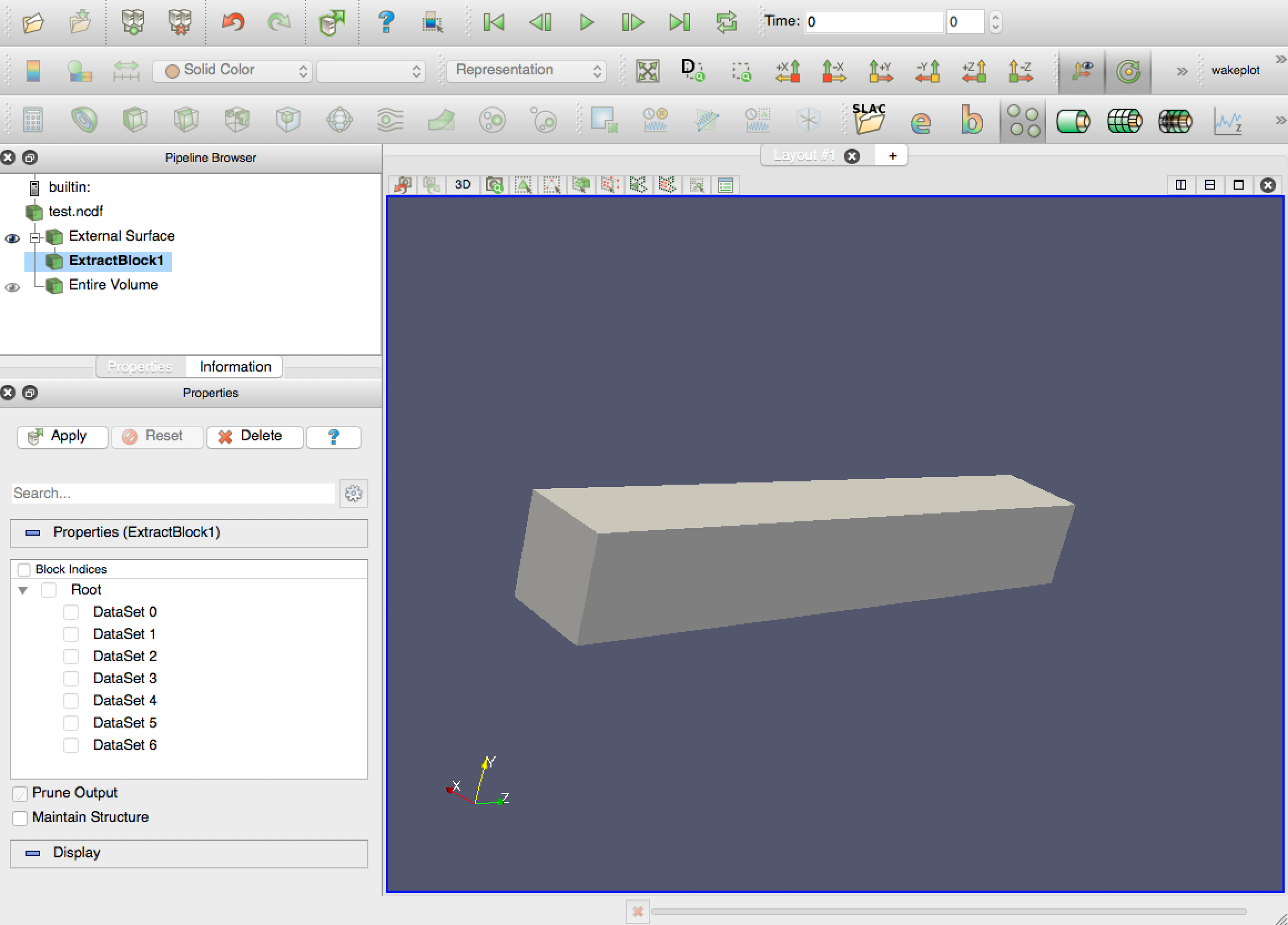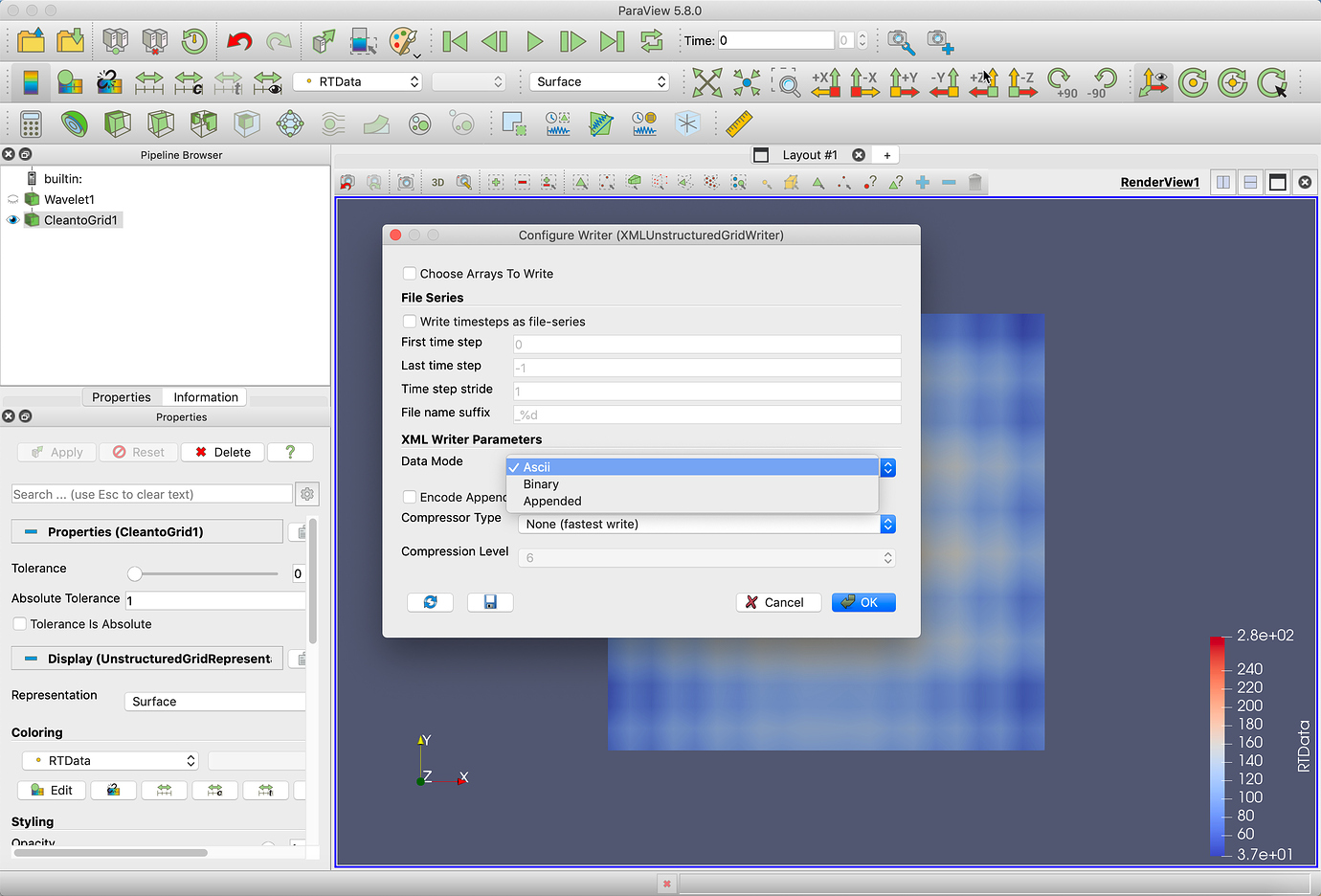

The Viridis and Inferno plots are linear, with Inferno exhibiting a higher slope and over a broader range. The black line traces the lightness value from the low end of the color map (left) to the high end (right). Lightness plots generated by converting the sRGB values to CIECAM02-UCS and displaying the lightness value (J) in greyscale. This is a valuable feature, since it greatly enhances detail when color can be used to disambiguate the low and high ends. As such, its lightness slope is generally double that of Viridis, allowing subtle changes to be more easily seen. Turbo mimics the lightness profile of Jet, going from low to high back down to low, without banding. The background in the following images is barely distinguishable with Inferno (which is already punchier than Viridis), but clear with Turbo. Depending on the data, some detail may be lost entirely to the naked eye. While this isn’t a concern for publishing, it does affect people’s choice when they must spend extended periods examining visualizations.īecause of rapid color and lightness changes, Jet accentuates detail in the background that is less apparent with Viridis and even Inferno. However, some feel that it can be harsh on the eyes. Inferno has the same linear properties of Viridis, but is higher contrast, making it better for picking out detail. Viridis is a linear color map that is generally recommended when false color is needed because it is pleasant to the eye and it fixes most issues with Jet. The resulting color map is not “perceptually linear” in the quantitative sense, but it is more smooth than Jet, without introducing false detail. This approach provides control while keeping the curve C2 continuous. Screenshot of the interface used to create and tune Turbo. To create the Turbo color map, we created a simple interface that allowed us to interactively adjust the sRGB curves using a 7-knot cubic spline, while comparing the result on a selection of sample images as well as other well known color maps. You can find the color map data and usage instructions for Python here and C/C++ here, as well as a polynomial approximation here. Turbo was hand-crafted and fine-tuned to be effective for a variety of visualization tasks. Today we are happy to introduce Turbo, a new colormap that has the desirable properties of Jet while also addressing some of its shortcomings, such as false detail, banding and color blindness ambiguity. While these linear lightness maps solve many important issues with Jet, their constraints may make them suboptimal for day to day tasks where the requirements are not as stringent. Today there are many modern alternatives that are uniform and color blind accessible, such as Viridis or Inferno from matplotlib. The above image with simulated Protanopia These effects are even more pronounced for users that are color blind, to the point of making the map ambiguous: Because the rate at which the color changes ‘perceptually’ is not constant, Jet is not perceptually uniform.

This causes sharp transitions when the map is applied to images, which are misleading when the underlying data is actually smoothly varying. However, if you look at the color map gradient, one can see distinct “bands” of color, most notably in the cyan and yellow regions.
One of the most commonly used color mapping algorithms in computer vision applications is Jet, which is high contrast, making it useful for accentuating even weakly distinguished image features. Right: The commonly used Jet rainbow map being used to create a false color image. Left: Disparity image displayed as greyscale.

Still, in many applications, “rainbow maps” are preferred since they show more detail (at the expense of accuracy) and allow for quicker visual assessment. For example, interpretation of “rainbow maps” have been linked to lower accuracy in mission critical applications, such as medical imaging. However, the choice of color map can have a significant impact on a given task. Colorizing images helps the human visual system pick out detail, estimate quantitative values, and notice patterns in data in a more intuitive fashion.
PARAVIEW LABEL FORMAT SOFTWARE
Posted by Anton Mikhailov, Senior Software Engineer, Daydreamįalse color maps show up in many applications in computer vision and machine learning, from visualizing depth images to more abstract uses, such as image differencing.


 0 kommentar(er)
0 kommentar(er)
